In 1950, the University of San Francisco uncovered more than 200 bodies when they broke ground to build Gleeson library (and they’ve uncovered more every time they’ve built or excavated since). In 1993, when the Legion of Honor was seismically retrofitted, 750 bodies were discovered under the building.
Disturbing, to be sure. But, you might be asking, what does that have to do with Buena Vista park?
Turns out, it’s very possible the tombstones that belonged to those unfortunate corpses can be found lining Buena Vista park’s verdant hills.
Around the turn of the twentieth century, San Francisco started to run out of room for its living residents, and people started to question whether or not it made sense for valuable real estate to be squandered on dead citizens. And as if it wasn’t bad enough that such substantial amounts of land were being sacrificed to already-deceased San Franciscans, more people kept dying all the time, requiring still more land to lay them to rest. With no end in sight, the powers-that-were needed to do something to solve the problem.
They started off by banning new burials, then decided that anyone already buried inside San Francisco would have to be relocated. They built a town nearby designed specifically for the purpose: Colma, just south of the city, became the new home to San Francisco’s dead. Well, most of them, anyway—as both UCSF and the Legion of Honor learned the hard way, some of those bodies slipped through the cracks and still dwell under the developments placed atop the supposedly vacated cemeteries.
Moving all of the City’s deceased citizens was expensive, and those who wanted their loved ones to make the move in style—meaning, with their identifying tombstones—had to pony up for it. Those souls whose relatives couldn’t be found or couldn’t afford to pay were placed into mass graves in Colma, and their headstones were used by the City as building materials for WPA projects such as breakwaters at Aquatic park and a seawall along the Great Highway.
And, they were used to line the walking paths of Buena Vista park.
The oldest park in San Francisco, Buena Vista looms up out of the Haight-Ashbury neighborhood, giving stunning views of the city, and the Golden Gate Bridge:
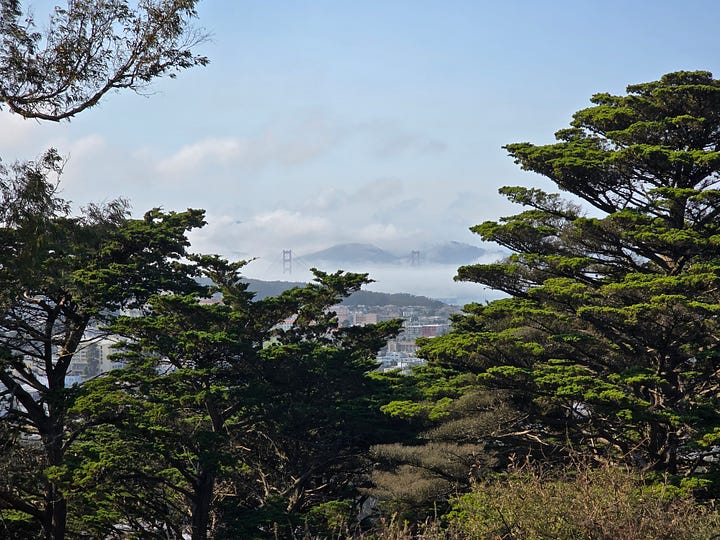
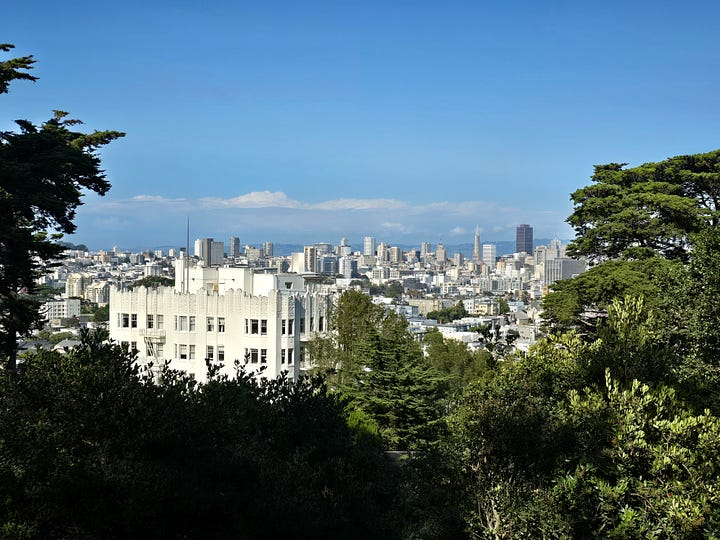
But as compelling as those views are, I find I spend most of my time with my eyes glued to the stones:
Most of the pieces were inserted writing-side down, so they look like any other stone; I’m not sure if this decision was made out of respect, or for esthetic reasons. But every so often a stone was inserted writing-side up, leaving mysterious hints about the people who once belonged to them:
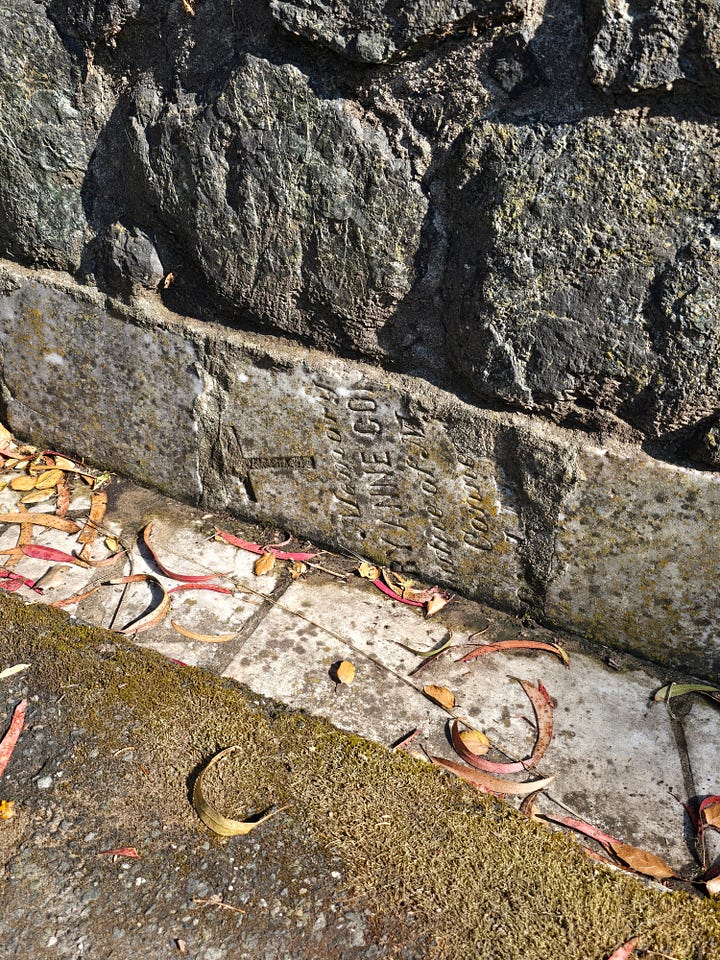
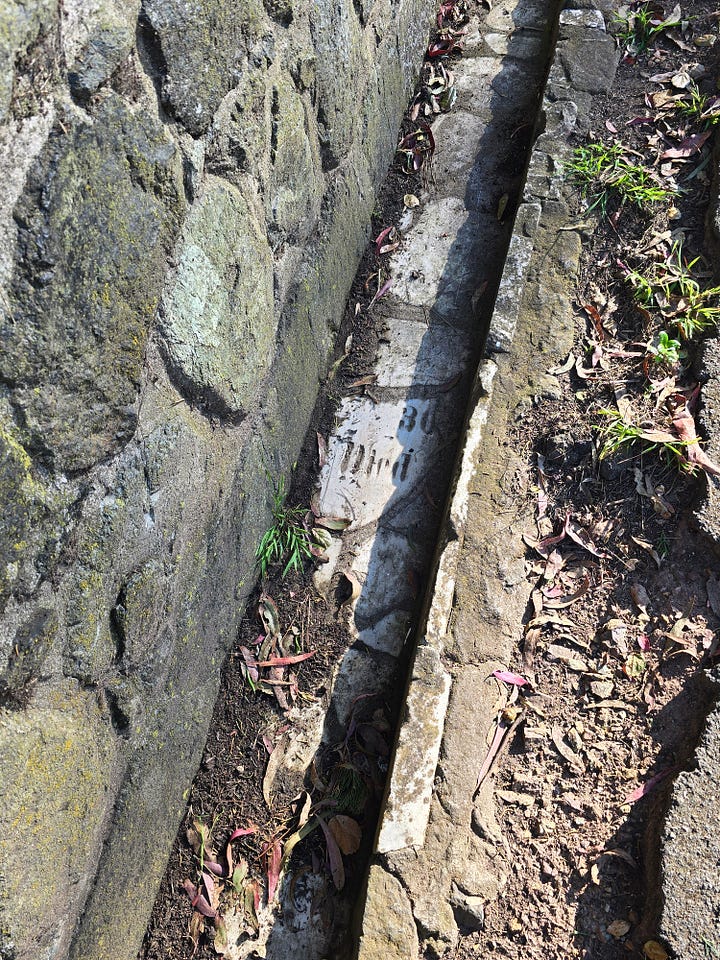
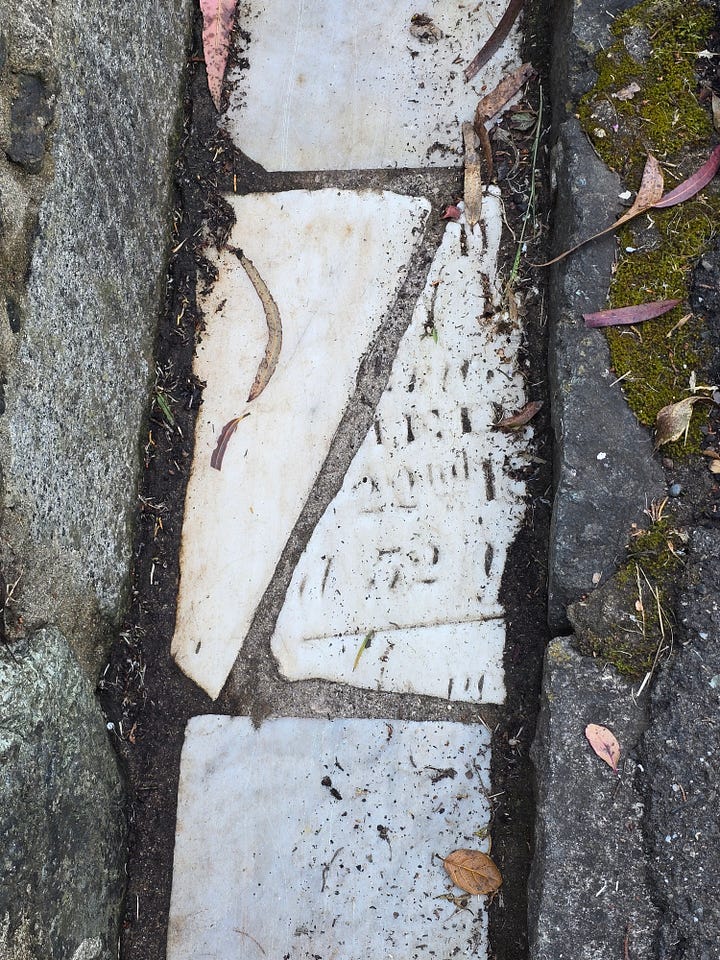
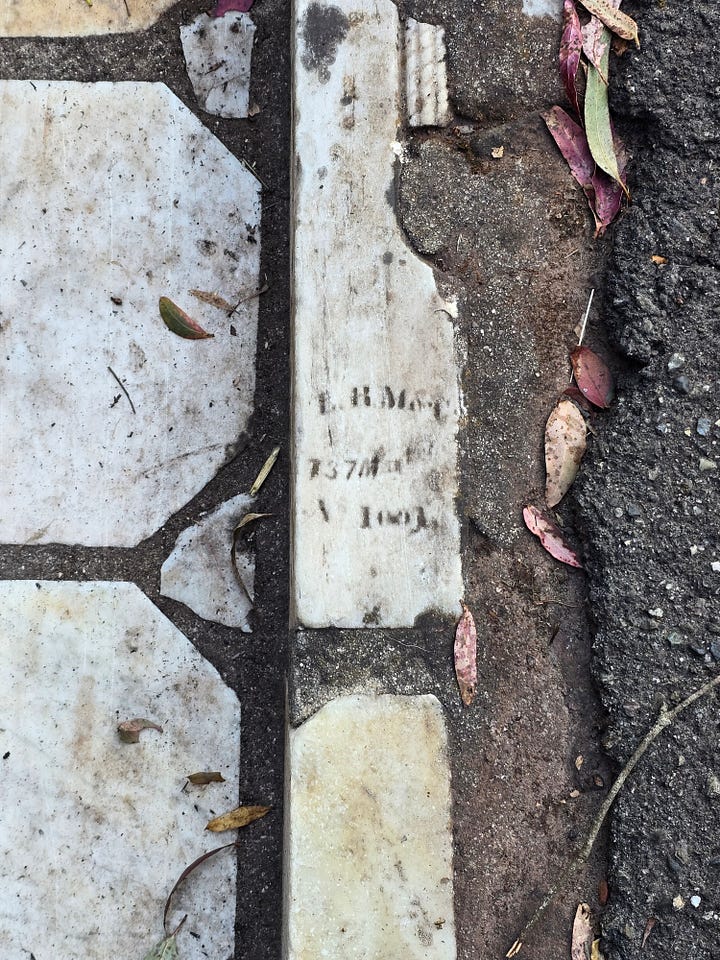
When I see these snippets, I always wonder who made the decision to put them upright, and why. I know if I’d been one of those WPA workers, it would have rankled me to put the stones upside down—I’d have felt like I was adding insult to injury, erasing the identities of those who’d been kicked out of their eternal resting places. I’d like to believe that at least one of the pavers felt the same way, and whenever his boss wasn’t watching, flipped over a stone to keep a whisper of their memories alive.
Incredibly maudlin of me? Maybe. But if you also lean toward the maudlin side of macabre, stop by as you wander around the Haight; pay a visit to these disenfranchised stones and the memories of those who used to sleep under them.
Sources:
KQED.org https://www.kqed.org/news/10779164/why-are-so-many-dead-people-in-colma-and-so-few-in-san-francisco
KQED.org https://www.kqed.org/arts/13917340/hidden-old-tombstones-guide-san-francisco-history
San Francisco Recreation and Parks https://sfrecpark.org/facilities/facility/details/Buena-Vista-Park-155




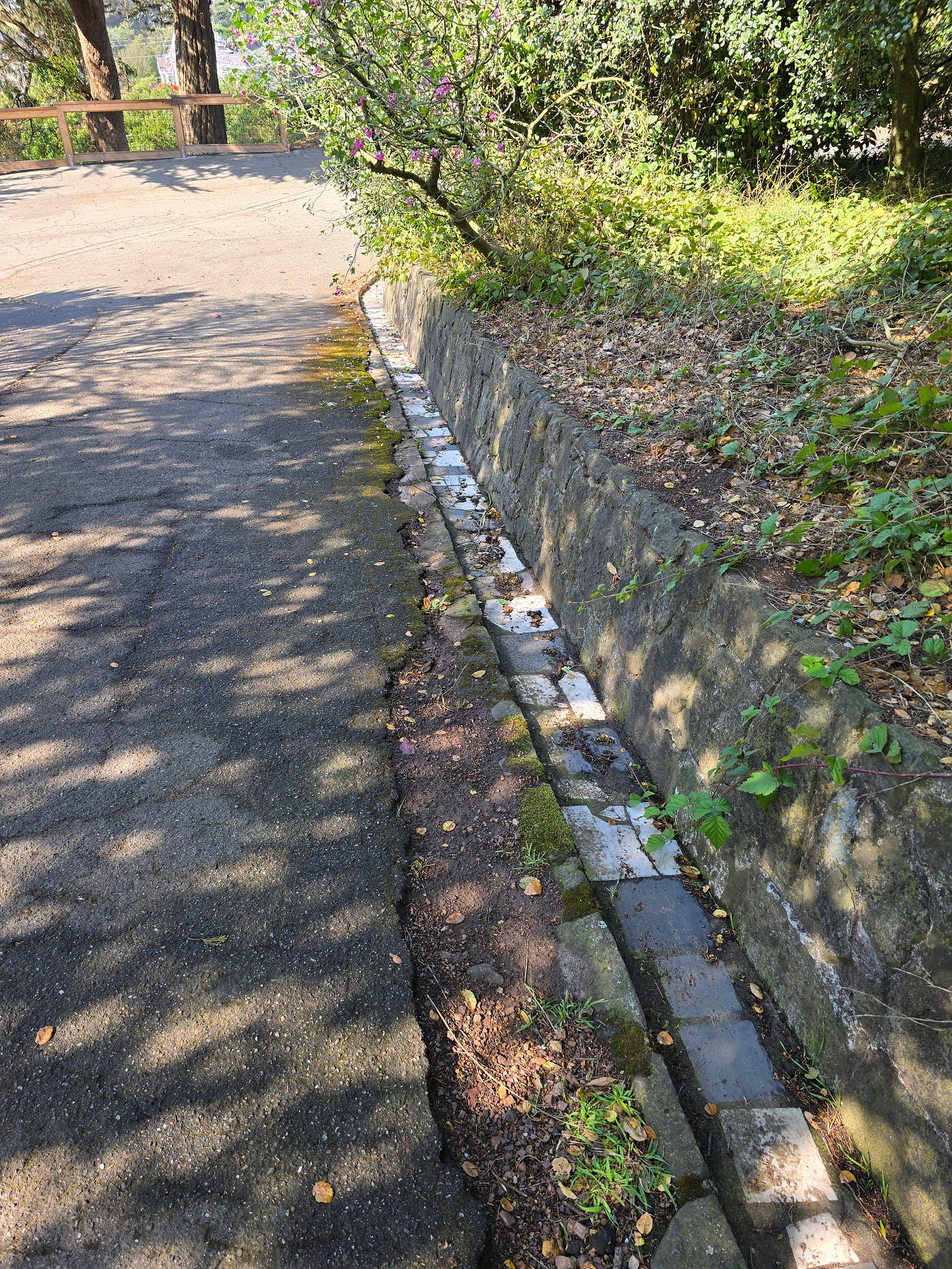
Wow, Fascinating!